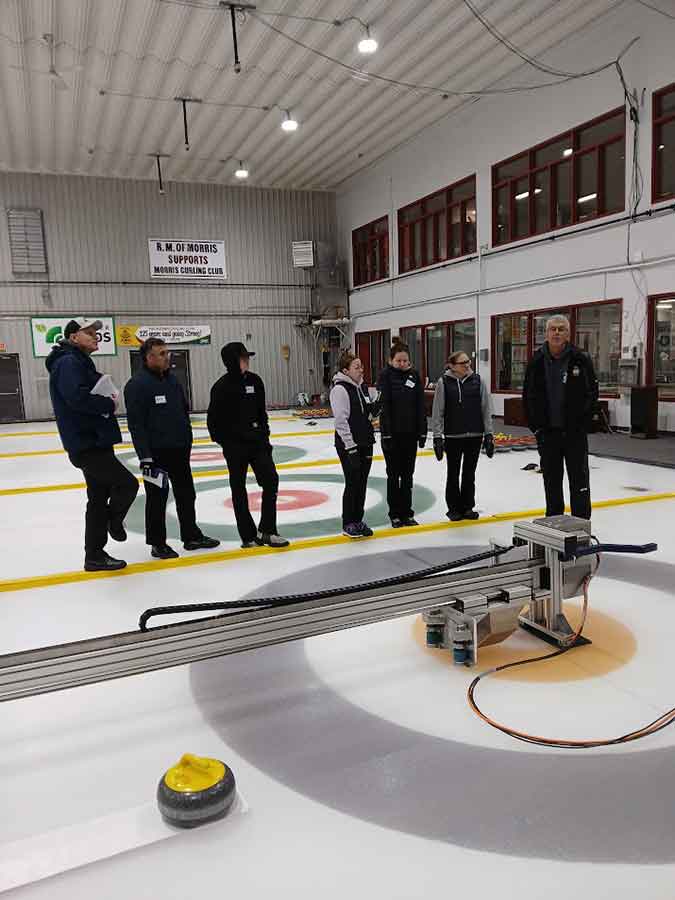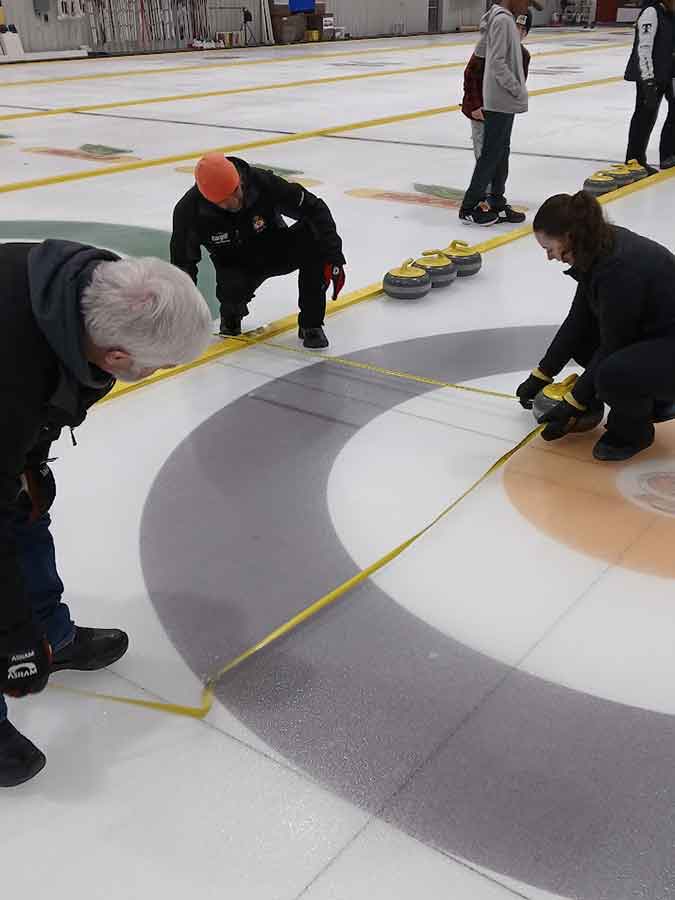A crowd of 40 curlers from across southern Manitoba gathered at Morris Curling Club’s Cargill Curling Training Centre (CCTC) last month to participate in the Canadian Rock Thrower Research Project.
Chris and Lorne Hamblin, Morris-area residents and Level 4 NCCP Olympic coaches, are visionaries in the sport of curling. After Lorne coached three of their sons to win the World Junior Curling Championships in 2002, the pair knew they had found their calling, leading to five years of high caliber coaching and working with international deaf athletes.
Established in 2016 through efforts by the Hamblins, the CCTC has been supported by many grants to make year-round curling training possible in Manitoba, including the installation of a geothermal unit.
Working closely with curling teams from around the world, the Hamblins have long been curious about a curling rock’s dynamics and how to ensure throwing rock consistency during training sessions. The duo worked with Manitoba’s Eascan Automation Inc. to develop the world’s first robotic curling rock thrower, unveiled in 2017. This machine remained, until 2024, the first rock thrower capable of delivering rocks with a high degree of accuracy. A similar machine now also exists in Japan.
Last fall, the provincial government awarded a $50,000 grant to the CCTC towards research and recruitment. The grant allows the centre to support curlers in two aspects: research and the development of educational camps for all levels of curlers, including high performance athletes, and the recruitment of youth.
Photos by Siobhan Maas/Voice
The Dec. 28 event in Morris studied the curling world’s question of how a rock’s end point is impacted by environmental and human variables— weight, curl, sweeping, and trajectory—with the constant nature of the rock thrower ensuring an accuracy level of 99 per cent.
Participants of all ages and skill levels took part in the real-time research, including Canadian curler Darcy Robertson alongside junior curlers, to discover the most effective sweeping techniques, understand how rotation affects the rock’s horizontal movement across the ice, and identify optimal release points.
Quinn Jones from East St. Paul, “plays for fun” and participated in the project to “understand the importance of weight and rotation. It was good to see the different tests in action.”
Following the morning’s on-ice experience, Ellie Friesen, 13-year-old skip for Altona’s Team Friesen, remained curious to the variables affecting “where the rock ends up.”
Despite not yet having played any formal games as a younger team, Sadie Froese from Team Kim was eager for the upcoming Feb. 1-2 Youth Spiel in Altona.
Set up for all Manitoba athletes curling in recreation, regular, or stick leagues, Chris Hamblin hoped “this event generated more questions for curlers. This was an opportunity for the average curler to try things they see on television. The information collected isn’t so much a specific measurement of sweeping, but rather a recognition that each player needs to test out their own techniques and abilities.”
The rock throwing machine is available for rent if teams wish to evaluate and hone their curling skills. If enough interest exists, the Morris Curling Club hopes to host another session in the future.
Results from the study will be released only to participants prior to submission to the government grant committee.


